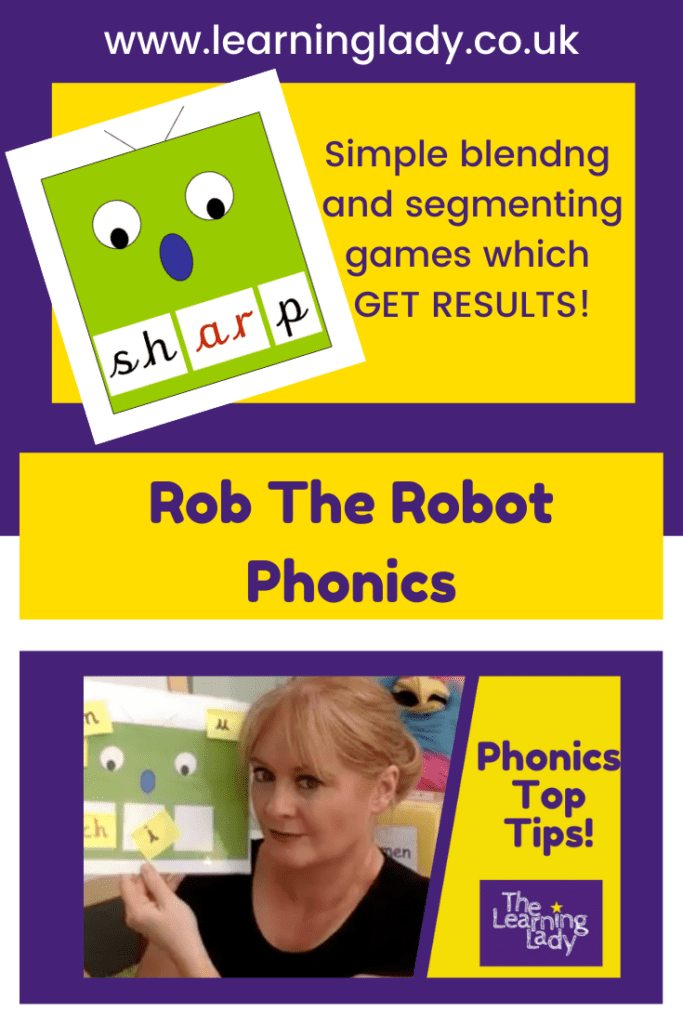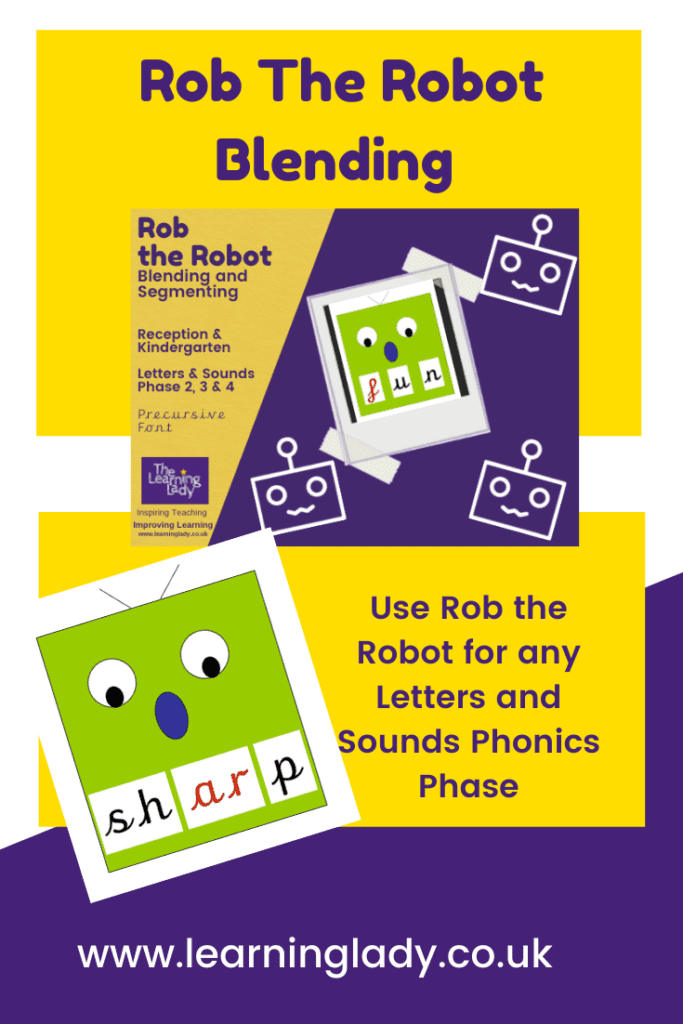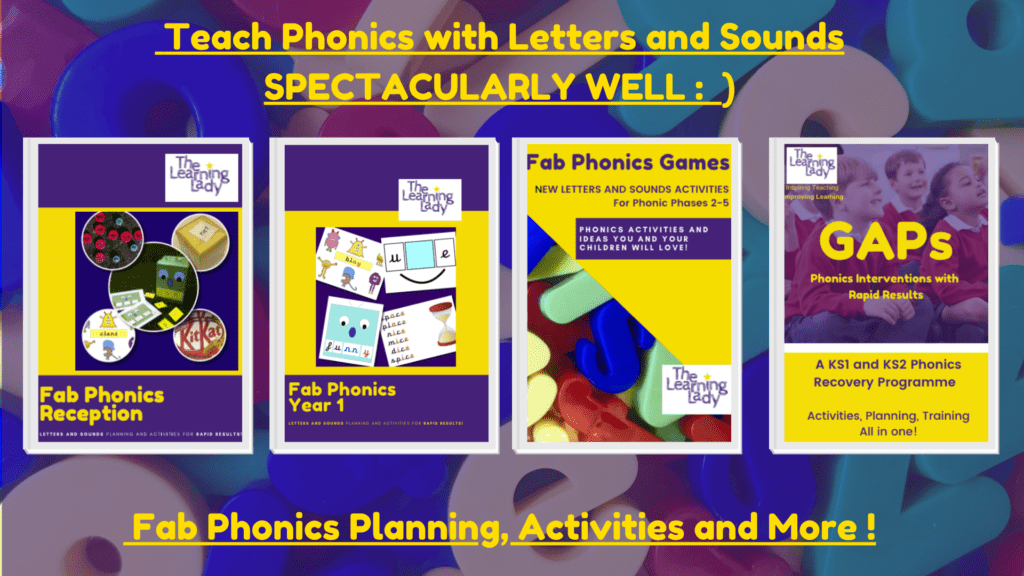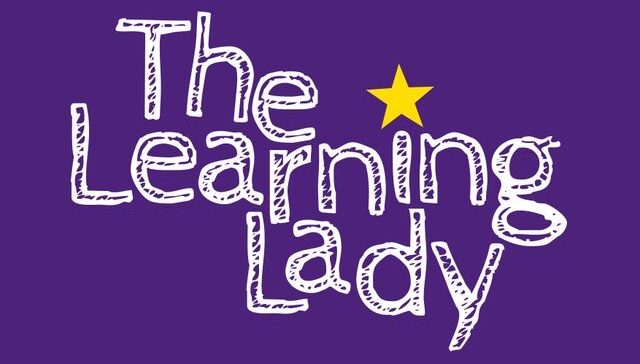If you’re looking for some fresh inspiration for your phonics lessons, or if you’re a parent looking to be able to support your child with phonics, then you’ve come to the right place! Here are two really simple, really effective games that you can play with your child or children, to make a spectacular start on their phonics journey!
Blending and Segmenting- Essential Skills
Blending and segmenting are skills so they take loads and loads of practice; a bit like learning to ride a bike, or drive a car. Because children need to practise and practice these skills of blending and segmenting over and over again, we need to find exciting and engaging ways to keep them interested.

A quick reminder
Blending and segmenting are reversible, a bit like addition and subtraction; it’s much easier for children to be able to do one, if they can do the other.
Blending is the process which helps children to be able to read words. As each letter-sound correspondence is introduced, it is read in isolation. These are then blended back together to read whole words.
Segmenting is the skill which helps children to be able to spell whole words. On hearing a whole word, children break it down into each of it’s separate spoken sounds.
These in turn are represented by letter which represent these sounds, then are put together to spell whole words.
For example, the word cat would be broken down into c-a-t, and sheep would sound like sh-ee-p.

Rob The Robot- Small Group Work
One really simple and effective resource I love to use is Rob the Robot. It’s just simply a photocopy paper box that is covered in paper, with a face on the top and antennae made from pipe cleaners!
It’s easy to make, you can use it in different ways and the children really like him.

Here are the templates for Rob the Robot’s face to get started straight away.
Rob The Robot Slides- For Whole Class Teaching
Using the robot box isn’t always achievable when I work with whole classes of children. In these situations I love to use robot slides instead, so that all of the children can see the words as they enter the robot’s mouth. I follow exactly the same process of blending. As each phoneme (letter-sound correspondence) is added to the robot’s mouth we read all together, blending to read the whole word once all words have been adde

Get your free Robot Slides to try here!
Rob The Robot For Teaching Segmenting
Before spelling or making a word, it’s essential to practise by orally segmenting , or practising verbally first. If the children can’t hear and say each of the separate spoken sounds, then they are really going to struggle when the letters are added.
Techniques used by schools can include:
Counting phonemes (spoken sounds) on fingers
Clapping each of the separate phonemes
Using our robot arms as an action to accompany the robot talk
Once the children have worked out the spoken sounds within a word they can work out which letters are needed to match the spoken sounds.
Get the Phoneme Frames for FREE here

Teaching points to remember:
Remind the children that words in English always go from left to right.
The phoneme frame / grid has spaces which match the phonemes or spoken sounds, rather than single letters. This is particularly important when digraphs are introduced (sounds made up of 2 letters such as sh, th, ch)
Always highlight the new letter-sound correspondence in a different colour and use it in all of the words on the day that it is taught. This helps to embed the new learning and supports memory.
Looking for even more NEW phonics games and simple phonics planning which gets AMAZING results?


can my little princess play this in roblox?
Yes! These would work really well too : )
give me a link plx if you have for myrobloxweb mod apk